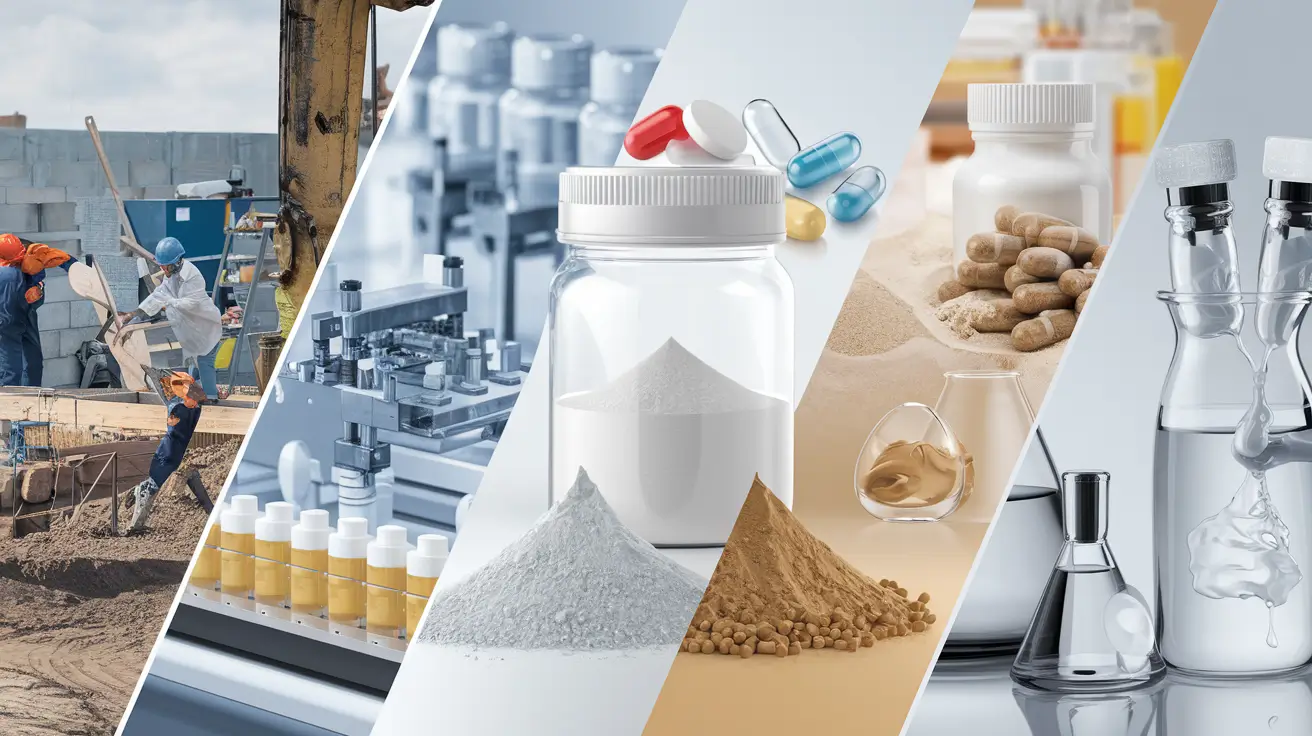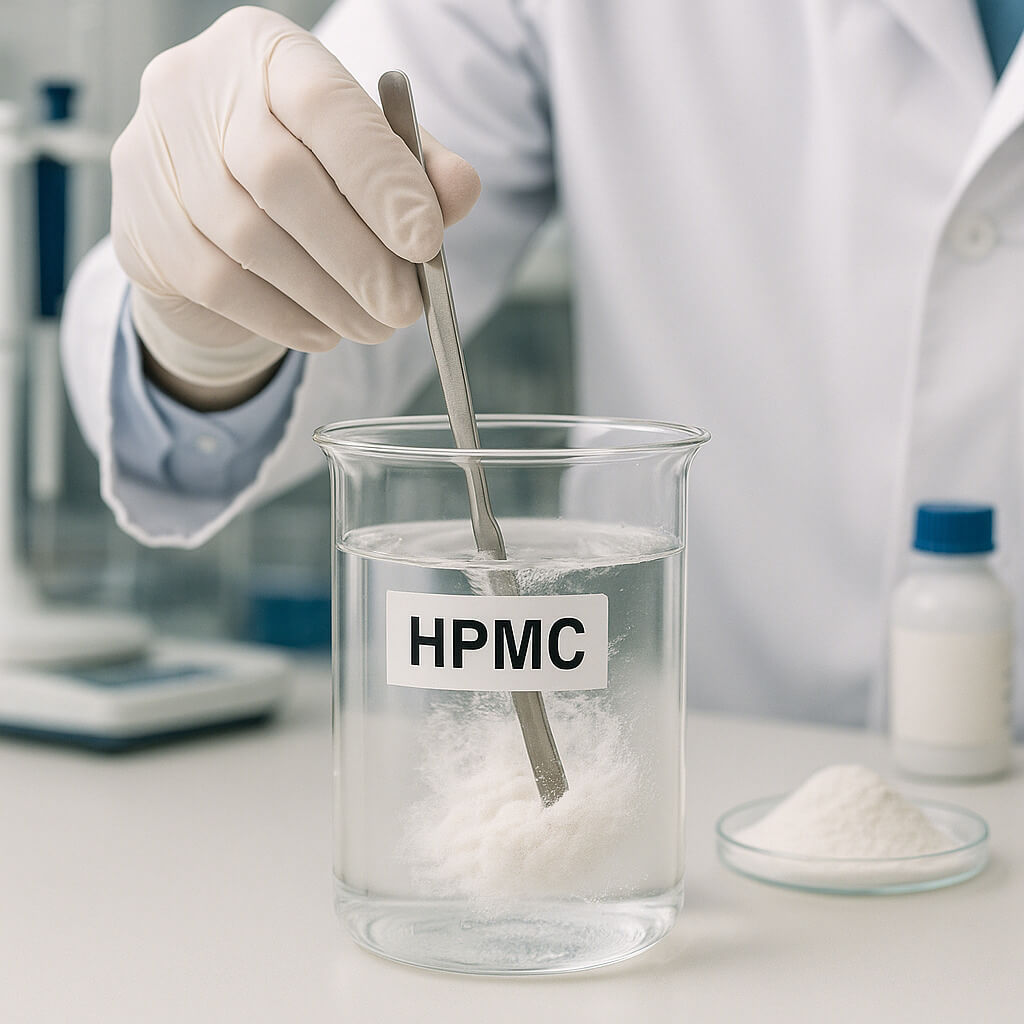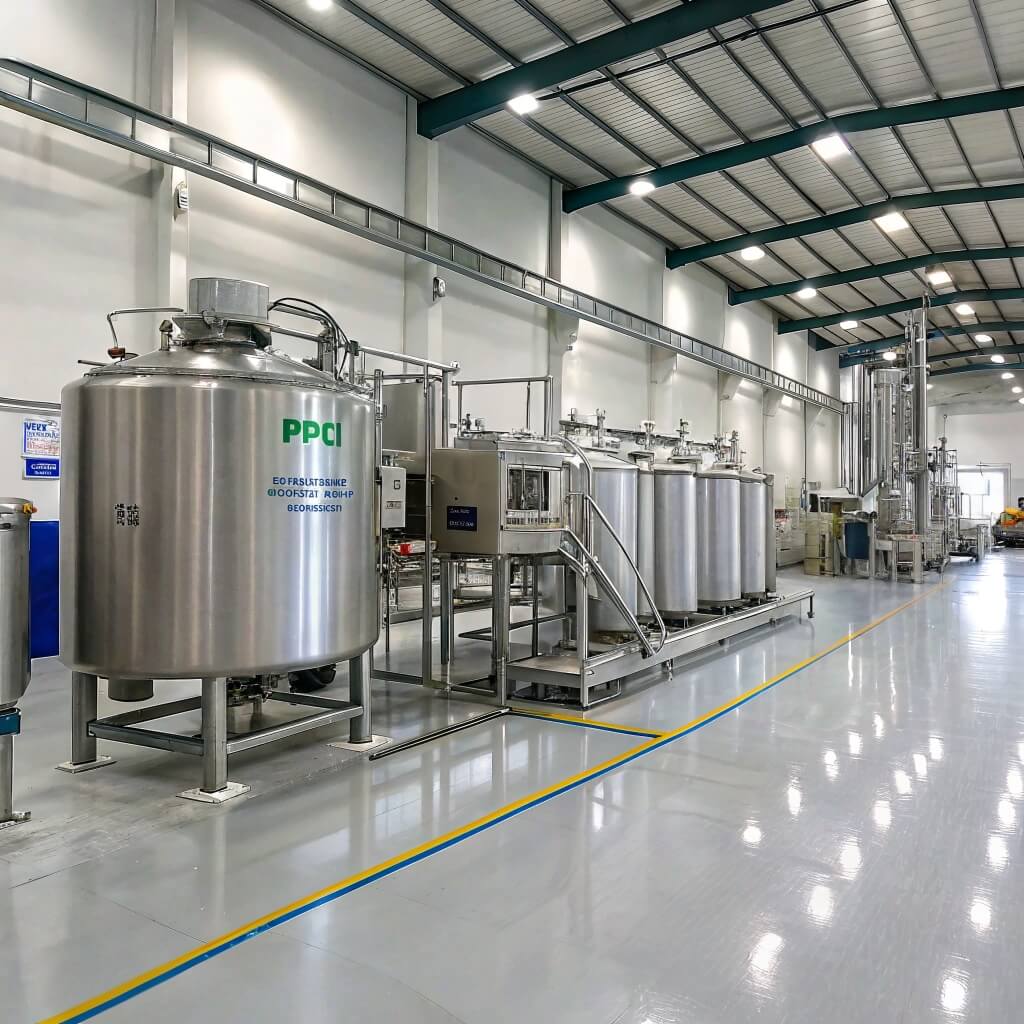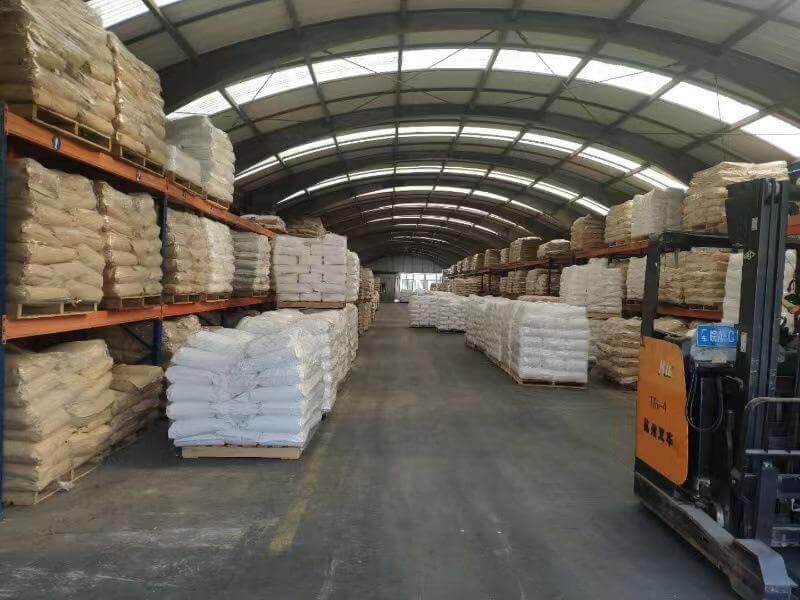Navigating the global supply chain for specialized chemicals presents a significant challenge for B2B buyers. Sourcing high-quality Hydroxypropyl Methylcellulose (HPMC) from China requires careful consideration of numerous factors, from manufacturer reliability to stringent quality controls. Without proper vetting, you risk inconsistent product quality, supply disruptions, and increased operational costs. This can severely impact your production schedules and product integrity. This article provides a comprehensive guide to identifying and partnering with leading Chinese HPMC manufacturers and exporters, ensuring a stable and dependable supply. We will cover HPMC fundamentals, reasons to choose Chinese suppliers, selection criteria, quality standards, common applications, export procedures, potential challenges, and future market trends.
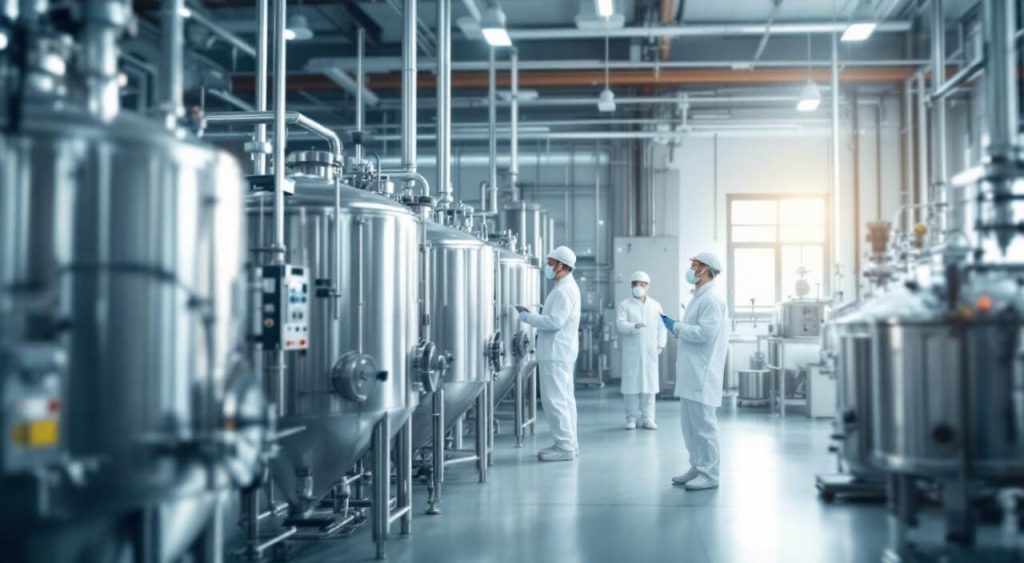
1. What is Hydroxypropyl Methylcellulose (HPMC)?
Hydroxypropyl Methylcellulose (HPMC) is a versatile polymer. It comes from cellulose, a natural plant fiber. Manufacturers chemically modify cellulose to create HPMC. This process makes HPMC soluble in water. It also gives HPMC unique properties. These properties make it useful in many industries. Here’s why it matters… HPMC is a non-ionic cellulose ether. It has both hydrophilic and hydrophobic groups. This dual nature allows it to perform various functions. It acts as a thickener, binder, film former, and water retention agent. It also serves as a protective colloid. These functions are critical in many product formulations. Its stability across a wide pH range is a key benefit. It also resists enzymatic degradation. This makes HPMC a reliable ingredient. It maintains its properties over time. This ensures product consistency.
HPMC comes in different grades. Each grade has specific properties. These properties depend on the degree of substitution and molecular weight. Different grades suit different applications. For example, some HPMC grades are for pharmaceuticals. Others are for construction or food. Understanding these differences is vital. It helps you choose the right HPMC for your needs. This ensures optimal product performance. It also helps meet regulatory requirements.
| Property | Description |
|---|---|
| Solubility | Dissolves in cold water, forming a clear solution. |
| Viscosity | Available in various viscosity grades, from low to high. |
| Gelation | Forms a thermoreversible gel upon heating. |
| Film Formation | Creates strong, flexible films. |
| Water Retention | Holds water effectively, preventing quick drying. |
| Surface Activity | Reduces surface tension, aiding dispersion. |
2. Why choose Chinese HPMC manufacturers?
China has become a global leader in HPMC production. Chinese manufacturers offer competitive pricing. This is due to large-scale production and efficient processes. Their cost-effectiveness helps B2B buyers. It allows them to reduce raw material expenses. This improves overall profit margins. The sheer volume of production ensures a steady supply. This minimizes supply chain risks. It also meets high demand. The best part? Chinese HPMC manufacturers have invested heavily in technology. They use advanced production methods. This leads to high-quality HPMC products. They also offer a wide range of HPMC grades. This diversity meets various industry needs. Their research and development efforts are continuous. They work to improve product performance. They also develop new applications. This commitment to innovation benefits buyers. It provides access to cutting-edge materials. It also ensures product reliability.
Chinese HPMC producers often have integrated supply chains. They control raw material sourcing. They also manage production and distribution. This integration leads to better quality control. It also ensures consistent product delivery. Their strategic location offers logistical advantages. This facilitates global shipping. It reduces transportation costs. This makes Chinese HPMC an attractive option. It is good for buyers worldwide. Their ability to scale production quickly is another advantage. This handles fluctuating market demands. It supports large-volume orders. This flexibility is valuable for businesses. It helps them adapt to changing needs.
| Advantage | Benefit for Buyers |
|---|---|
| Cost-Effectiveness | Lower raw material costs, higher profit margins. |
| High Production Capacity | Reliable supply, reduced risk of shortages. |
| Advanced Technology | Consistent quality, innovative product options. |
| Diverse Product Range | Tailored solutions for specific applications. |
| Integrated Supply Chain | Better quality control, smoother logistics. |
3. How do you select a reliable HPMC supplier in China?
Selecting a reliable HPMC supplier in China requires due diligence. Start by checking certifications. Look for ISO 9001 for quality management. GMP certification is vital for pharmaceutical grades. These certifications show a commitment to quality. They also indicate adherence to international standards. Experience matters greatly. Choose suppliers with a long history. They should have a proven track record. This indicates stability and reliability. Request product samples for testing. This verifies quality before a large purchase. It ensures the HPMC meets your specifications. But here’s the thing… Factory audits are non-negotiable. Conduct on-site visits if possible. If not, use third-party audit services. These audits assess production facilities. They check quality control systems. They also verify compliance with standards. Pay attention to their quality control processes. A good supplier has strict checks. These checks happen at every production stage. This includes raw material inspection. It also covers in-process testing and final product analysis. Transparent reporting is also key. They should provide detailed Certificates of Analysis (CoAs).
Effective communication is crucial. Language barriers can cause misunderstandings. Ensure the supplier has English-speaking staff. Use clear and concise language in all communications. Confirm all details in writing. This avoids future disputes. Negotiate terms carefully. Discuss pricing, payment terms, and delivery schedules. Clarify minimum order quantities. Understand their return and refund policies. A clear contract protects both parties. It outlines responsibilities and expectations. Building a long-term relationship is beneficial. It can lead to better pricing. It also ensures priority service. Trust and mutual understanding are key. These factors foster a strong partnership.
| Selection Criteria | Importance |
|---|---|
| Certifications (ISO, GMP) | Ensures quality management and regulatory compliance. |
| Experience and Track Record | Indicates reliability and stability. |
| Product Samples | Verifies quality and suitability for your application. |
| Factory Audits | Assesses production facilities and quality control. |
| Quality Control Processes | Guarantees consistent product quality. |
| Communication | Prevents misunderstandings, ensures smooth transactions. |
| Contract Terms | Protects both parties, defines expectations. |
4. What quality standards apply to Chinese HPMC?
Chinese HPMC manufacturers adhere to various quality standards. These include international and national regulations. International standards are crucial for global trade. The United States Pharmacopeia (USP) sets standards for pharmaceutical HPMC. The European Pharmacopoeia (EP) does the same for Europe. The Food Chemicals Codex (FCC) applies to food-grade HPMC. Compliance with these standards ensures product safety. It also guarantees efficacy and quality. Many Chinese manufacturers meet these global benchmarks. They do this to serve international markets. This commitment to international standards builds trust. It assures buyers of product reliability. Now, you might be wondering… Chinese national standards also play a vital role. The Chinese Pharmacopoeia (ChP) governs pharmaceutical products within China. Other national standards cover industrial and food-grade HPMC. These standards define purity levels. They also specify physical and chemical properties. They outline testing methods. Reputable manufacturers follow these strictly. They often have in-house labs. These labs perform rigorous testing. They ensure every batch meets specifications. This includes tests for viscosity, moisture content, and heavy metals. They also check for microbial limits. These comprehensive tests guarantee product quality.
Quality assurance processes are robust. Manufacturers use advanced analytical equipment. This ensures accurate testing results. They maintain detailed records for each batch. This provides full traceability. It allows buyers to track product origins. It also helps verify quality at every stage. Third-party testing is also common. Independent labs confirm product quality. This adds another layer of assurance. It provides unbiased verification. This practice is especially important for sensitive applications. These include pharmaceuticals and food. Choosing a supplier with strong quality control is paramount. It protects your brand reputation. It also ensures consumer safety. It helps avoid costly product recalls. This focus on quality is a hallmark of top Chinese HPMC suppliers.
| Standard Type | Examples | Scope |
|---|---|---|
| International Pharmacopoeia | USP, EP | Pharmaceutical HPMC for global markets. |
| Food Standards | FCC | Food-grade HPMC for safety and quality. |
| Chinese Pharmacopoeia | ChP | Pharmaceutical HPMC within China. |
| Industrial Standards | Various national standards | HPMC for construction and other industrial uses. |
| Quality Management | ISO 9001 | General quality management systems. |
5. What are common uses for HPMC from China?
HPMC from China finds widespread use across many industries. In construction, it acts as a thickener and water retention agent. It improves workability of cement-based products. These include tile adhesives, renders, and self-leveling compounds. HPMC prevents rapid drying. This allows for proper hydration of cement. It enhances bond strength. It also improves crack resistance. This leads to more durable structures. Let me explain… In pharmaceuticals, HPMC serves multiple functions. It is a binder in tablet formulations. It ensures tablet integrity. It also acts as a film-forming agent for coatings. These coatings protect active ingredients. They also control drug release. HPMC is also used in ophthalmic solutions. It increases viscosity. This prolongs contact time with the eye. Its inert nature makes it safe for medical use. It does not react with active pharmaceutical ingredients.
The food industry uses HPMC as a thickener and stabilizer. It improves texture in sauces, dressings, and dairy products. It also prevents syneresis in frozen foods. HPMC is a common ingredient in vegetarian and vegan products. It replaces animal-derived gelling agents. In cosmetics and personal care, HPMC is a film former and emulsifier. It is found in shampoos, lotions, and creams. It provides a smooth texture. It also enhances product stability. Its non-toxic and non-irritating properties make it suitable for skin contact. This broad applicability highlights HPMC’s versatility. It shows its value across diverse sectors. Chinese manufacturers produce grades tailored for each specific use. This ensures optimal performance in every application.
| Industry | HPMC Application | Benefit |
|---|---|---|
| Construction | Tile adhesives, renders | Improved workability, water retention, bond strength. |
| Pharmaceuticals | Tablet binders, film coatings | Tablet integrity, controlled drug release. |
| Food | Thickeners, stabilizers | Enhanced texture, prevention of syneresis. |
| Cosmetics | Shampoos, lotions | Smooth texture, product stability. |
| Paints & Coatings | Thickeners, rheology modifiers | Improved flow, anti-sag properties. |
6. How does HPMC export from China work?
Exporting HPMC from China involves several steps. First, prepare all necessary documentation. This includes the commercial invoice and packing list. You also need a Certificate of Origin. A Bill of Lading or Air Waybill is essential for shipping. For certain destinations, a phytosanitary certificate may be required. This confirms the product is free from pests. Ensure all documents are accurate. Any errors can cause delays. They can also lead to customs issues. This is important because… Shipping HPMC requires careful planning. It is typically transported in bags or drums. These are then loaded into containers. Choose a reputable freight forwarder. They handle logistics from the factory to your destination. Consider both sea and air freight. Sea freight is more cost-effective for large volumes. Air freight is faster for urgent orders. Discuss Incoterms (International Commercial Terms) with your supplier. These define responsibilities for shipping costs and risks. Common Incoterms include FOB (Free On Board) and CIF (Cost, Insurance, and Freight).
Payment terms vary. Common methods include Telegraphic Transfer (T/T) and Letter of Credit (L/C). T/T involves an upfront deposit. The balance is paid upon shipment. L/C offers more security for both parties. It involves banks guaranteeing payment. Understand the payment schedule. This helps manage your cash flow. Trade finance options may also be available. These can help with large orders. They provide working capital. Building a strong relationship with your supplier can lead to flexible terms. This benefits long-term partnerships. Always confirm all export details in writing. This ensures a smooth transaction. It minimizes potential problems. Proper planning and communication are key to successful HPMC imports.
| Export Step | Key Considerations |
|---|---|
| Documentation | Commercial invoice, packing list, Certificate of Origin, Bill of Lading. |
| Shipping Method | Sea freight for cost, air freight for speed. |
| Incoterms | Define responsibilities (e.g., FOB, CIF). |
| Payment Terms | T/T (Telegraphic Transfer), L/C (Letter of Credit). |
| Freight Forwarder | Choose a reputable company for logistics. |
7. What challenges exist when sourcing HPMC from China?
Sourcing HPMC from China can present challenges. Quality consistency is a primary concern. Variations in raw materials or production processes can occur. This leads to inconsistent product quality. Implement strict quality control measures. This includes pre-shipment inspections. It also involves independent lab testing. This helps mitigate risks. Communication barriers are another hurdle. Language differences can cause misunderstandings. Cultural nuances also play a role. Use clear, simple language. Confirm all details in writing. Consider using a trusted local agent. They can bridge communication gaps. Want to know the secret? Intellectual property (IP) protection is a concern. Ensure your formulations or specifications are secure. Work with reputable suppliers. They have strong IP protection policies. Include confidentiality clauses in contracts. This safeguards your proprietary information. Regulatory changes can also impact supply. China’s environmental policies may affect production. Trade policies and tariffs can change. Stay informed about these developments. This helps you adapt quickly. Diversifying your supplier base can also reduce risk. Do not rely on a single source. This provides flexibility. It ensures continuity of supply. Addressing these challenges proactively is vital. It leads to a more secure and reliable supply chain.
| Challenge | Mitigation Strategy |
|---|---|
| Quality Consistency | Pre-shipment inspections, independent lab testing. |
| Communication Barriers | Clear communication, local agents, written confirmations. |
| Intellectual Property | Reputable suppliers, confidentiality clauses. |
| Regulatory Changes | Stay informed, diversify supplier base. |
| Logistics Delays | Plan ahead, use reliable freight forwarders. |
8. What future trends shape China’s HPMC market?
China’s HPMC market is constantly evolving. Sustainability is a growing trend. Manufacturers are adopting greener production methods. They aim to reduce environmental impact. This includes using renewable energy sources. It also involves minimizing waste. Buyers increasingly prefer eco-friendly products. This trend will drive innovation. It will also shape future supply chains. Innovation in HPMC derivatives is another key area. New HPMC types are being developed. These have enhanced properties. They offer improved performance in specific applications. This includes specialized grades for drug delivery. It also covers advanced construction materials. These innovations will open new market opportunities. They will also meet evolving industry needs. The bottom line? Market growth for HPMC remains strong. Demand is rising in construction and pharmaceuticals. Emerging economies drive this growth. Urbanization and healthcare expansion contribute. China’s role as a major supplier will continue. Its production capacity is unmatched. Its competitive pricing is also a factor. Global economic shifts can impact the market. Trade tensions or economic slowdowns may affect demand. Geopolitical factors can influence supply chains. Staying informed about these trends is crucial. It helps businesses adapt their sourcing strategies. It ensures long-term supply stability. These trends highlight the dynamic nature of the HPMC market. They also show China’s central role in it.
Conclusion
Sourcing HPMC from China offers significant advantages for B2B buyers, including cost-effectiveness and a vast supply. This article has provided a detailed roadmap for navigating this complex market, from understanding HPMC fundamentals to managing export logistics and anticipating future trends. By applying rigorous supplier selection criteria, adhering to quality standards, and proactively addressing potential challenges, you can secure a reliable and high-quality supply of HPMC. This strategic approach minimizes risks and optimizes your procurement process. To further streamline your sourcing and ensure access to top-tier Chinese HPMC manufacturers, contact Morton today. We provide expert guidance and tailored solutions to meet your specific HPMC needs, ensuring your projects proceed smoothly and efficiently. We are here to help you succeed.
FAQ
Q1: What is HPMC used for in construction?
HPMC is widely used in construction as a thickener, binder, and water retention agent in cement-based products like tile adhesives, renders, and self-leveling compounds. It improves workability, prevents rapid drying, and enhances bond strength and crack resistance.
Q2: How can I verify a Chinese HPMC manufacturer’s quality?
Verify quality by checking for certifications like ISO 9001 and GMP, requesting product samples for testing, conducting factory audits (on-site or third-party), and reviewing detailed Certificates of Analysis (CoAs) for each batch.
Q3: Are there different types of HPMC?
Yes, HPMC comes in various types or grades, differentiated by their degree of substitution and molecular weight. These variations determine properties like viscosity, gelation temperature, and solubility, making them suitable for specific applications in pharmaceuticals, construction, food, and cosmetics.
Q4: What are the typical lead times for HPMC orders from China?
Lead times for HPMC orders from China can vary significantly based on order volume, specific grade availability, production schedules, and shipping method. Typically, sea freight can take 4-6 weeks, while air freight is faster, often 1-2 weeks, after production is complete.
Q5: What is the shelf life of HPMC?
HPMC generally has a shelf life of 2-3 years when stored in its original, unopened packaging in a cool, dry place away from direct sunlight and moisture. Proper storage conditions are crucial to maintain its properties and performance over time.

